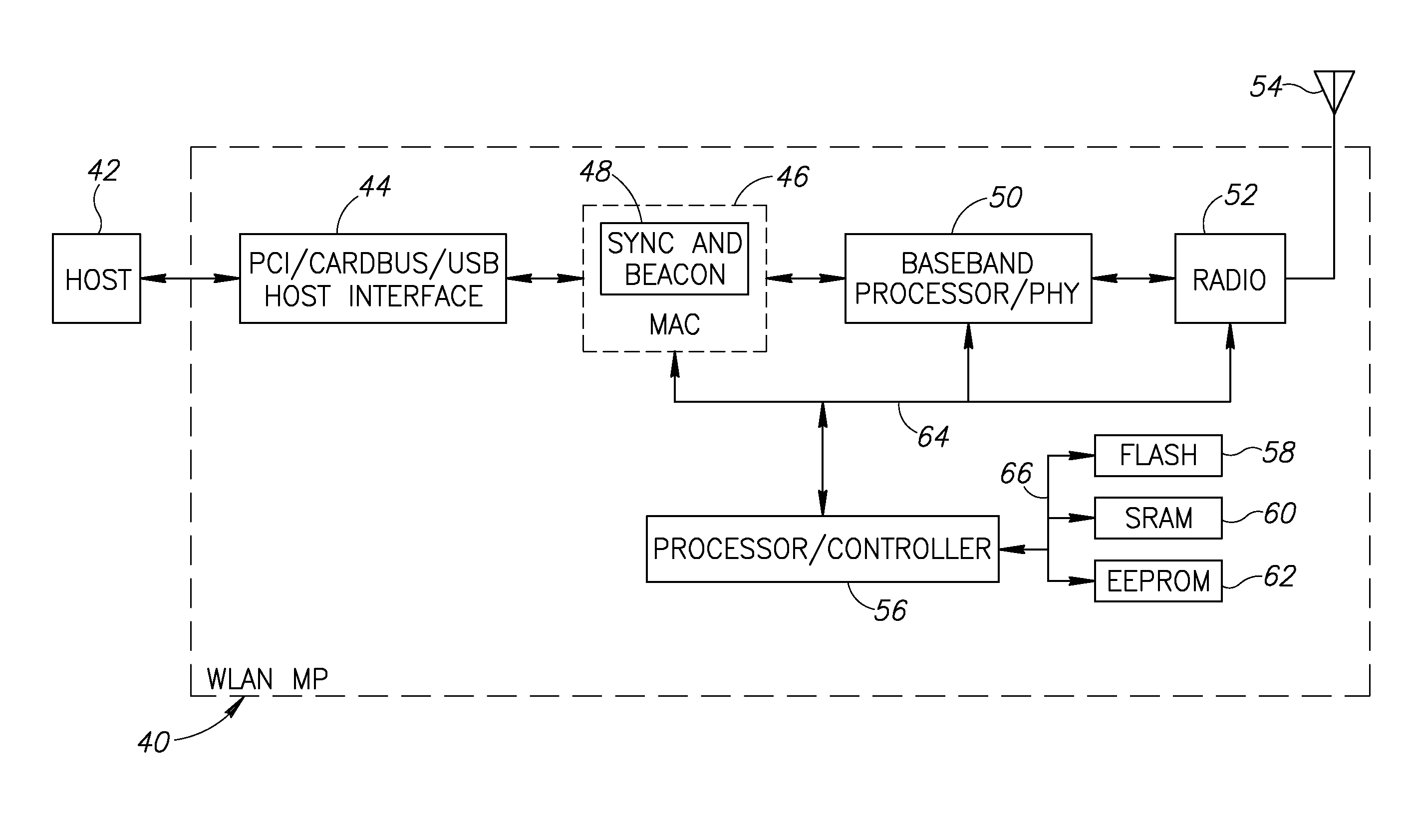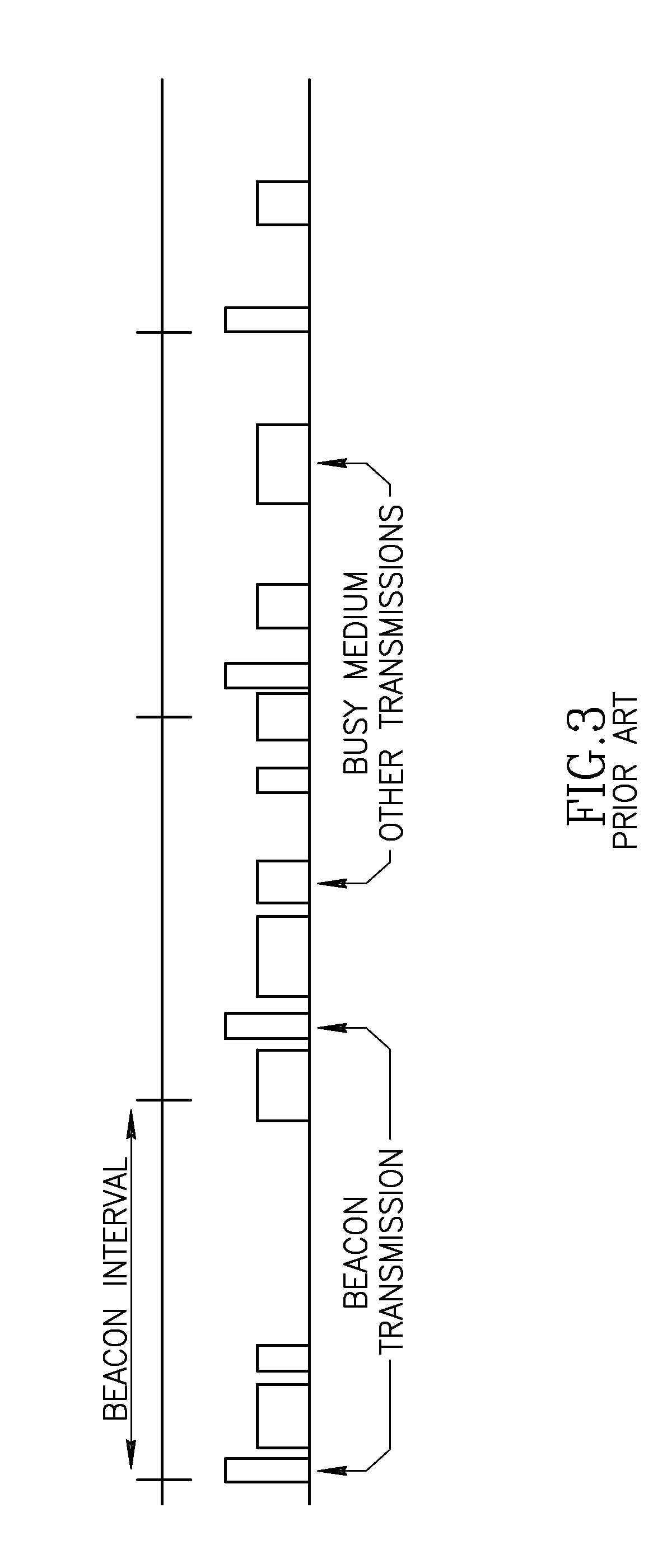Apparatus for and method of synchronization and beaconing in a WLAN mesh network
a mesh network and antenna technology, applied in the field of data communication, can solve the problems of power consumption and security, network extensions blur the lines between infrastructure and client devices, and do not use or provide distribution system (ds) and congestion control services
- Summary
- Abstract
- Description
- Claims
- Application Information
AI Technical Summary
Benefits of technology
Problems solved by technology
Method used
Image
Examples
Embodiment Construction
Notation Used Throughout
[0051] The following notation is used throughout this document.
TermDefinitionACAlternating CurrentAPAccess PointASICApplication Specific Integrated CircuitATIMAd Hoc Traffic IndicationBBBeacon BroadcasterBSSBasic Service SetCCAClear Channel AssessmentCCKComplementary Code KeyingCFPContention Fee PeriodDRAMDynamic Random Access MemoryDSDistribution SystemDSPDigital Signal ProcessorDTIMDelivery Traffic Indication MessageEDGEEnhanced Data Rates For Global EvolutionEEPROMElectrically Erasable ProgrammableRead Only MemoryESSExtended Service SetFPGAField Programmable Gate ArrayHDLHardware Description LanguageIBSSIndependent Basic Service SetIDIdentificationIEInformation ElementIEEEInstitute Of Electrical And Electronic EngineersIFIntermediate FrequencyLANLocal Area NetworkMACMedium Access ControllerMAPMesh Access PointMPMesh PointMSDUMAC Service Data UnitOFDMOrthogonal Frequency Division MultiplexingOSIOpen Systems InterconnentPCIPersonal Computer InterconnectPD...
PUM
 Login to View More
Login to View More Abstract
Description
Claims
Application Information
 Login to View More
Login to View More - R&D
- Intellectual Property
- Life Sciences
- Materials
- Tech Scout
- Unparalleled Data Quality
- Higher Quality Content
- 60% Fewer Hallucinations
Browse by: Latest US Patents, China's latest patents, Technical Efficacy Thesaurus, Application Domain, Technology Topic, Popular Technical Reports.
© 2025 PatSnap. All rights reserved.Legal|Privacy policy|Modern Slavery Act Transparency Statement|Sitemap|About US| Contact US: help@patsnap.com



